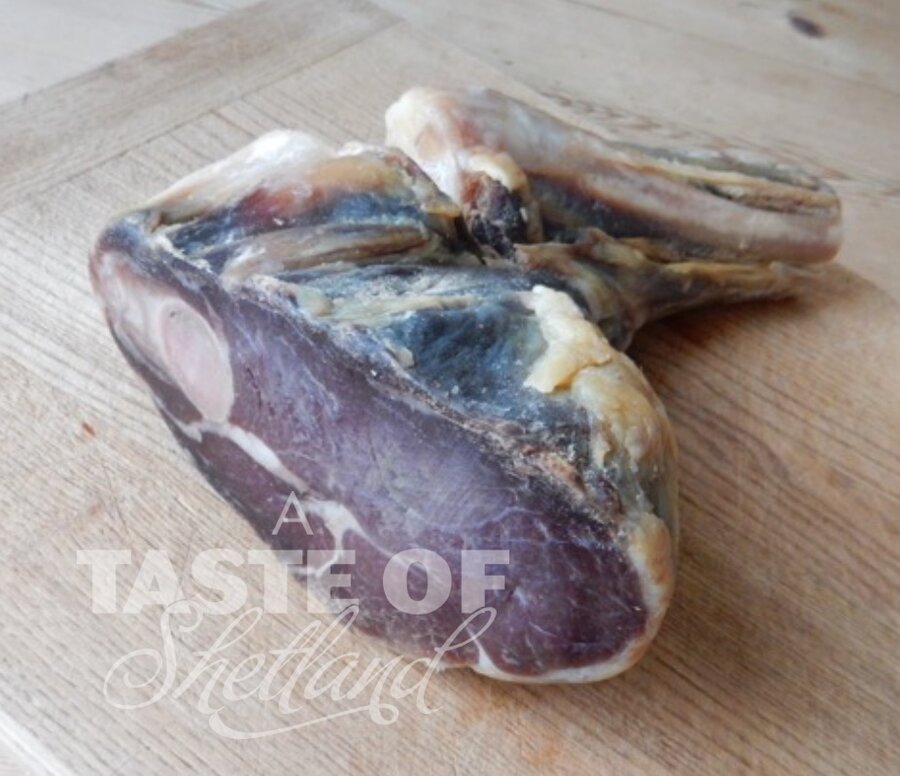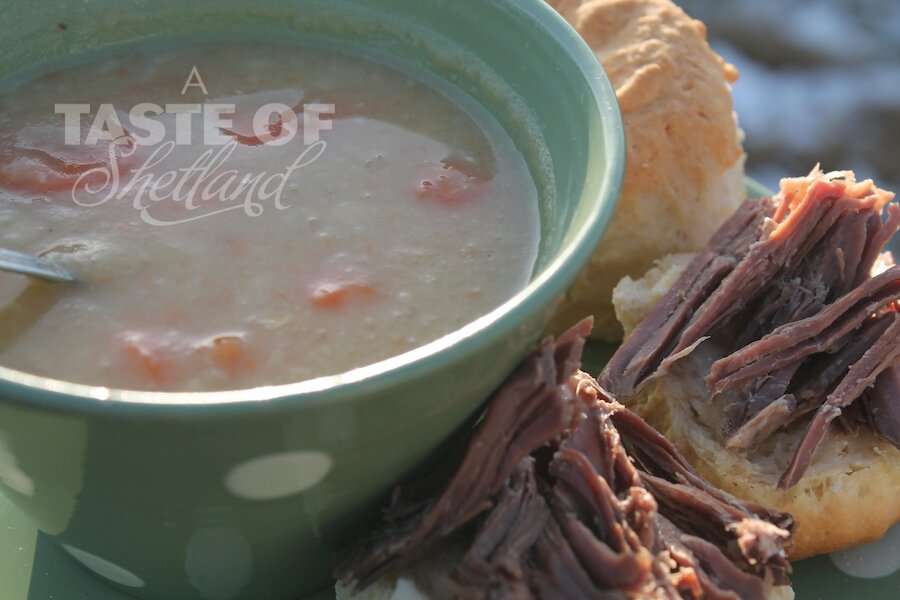Reestit mutton, and the tattie soup made on its stock, are integral parts of many festivities in Shetland and are widely considered to be our “national dish". Traditionally, “reesting” was a way of preserving fresh meat over the winter months. Today, it is prepared and eaten at a range of events, but especially at New Year and Up Helly Aa. In halls and homes the length and breadth of Shetland, huge cauldrons of soup are prepared along with trays of light, fluffy Shetland bannocks and saat flesh. This bounteous feast keeps body and soul together as first footers and guizers face a gruelling night of partying! Its saltiness makes it well suited to the abundant supplies of liquid refreshment to be found during these celebrations!
What exactly is reestit mutton?
Reestit mutton is essentially the salted meat of an eighteen-month old castrated hog lamb. The meat is brined then dried to cure, and is called mutton because it was originally made with older, less productive animals. In its original form it was used for the flavour and body it gives to an otherwise plain vegetable soup, rather than a substantial yield of meat. Today, cuts from younger animals with more and better quality meat are used. The end product is a real delicacy. Once properly cured it can be kept until it's needed. Similar to prosciutto and other cured meats, reestit mutton can keep for years if it's properly prepared and stored. Before eating it is boiled for several hours, on the bone, and then cooled and eaten with a hearty vegetable soup made with the stock.
Until salt became cheaper and more widely available across the isles, people would have made its more temperamental predecessor Vivda or Skerpikjøt, often considered a Nordic cousin to southern Europe’s prosciutto. The process for this is more of a gamble; mutton is hung to dry in the fresh, salty air in special drying houses where the meat ferments as it dries. Temperature is key in this process and it is much trickier to get right, but this method is still popular in Faroe and parts of Scandinavia.


